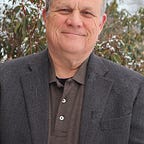Midwest Cities Created Their Own “Doom Loop”
Interstates emptied downtowns. Now cities are suffering.
I live just a few miles from downtown Akron. I’ve lived in Akron for a decade. My work never took me downtown very often so I don’t have a good “pre Covid/post covid” comparison. I attended a three day convention a few weeks ago at Akron’s convention center. We were on our own for lunches so my wife and a few friends took the opportunity to visit a few cafes that we didn’t get to often. I was surprised at how empty downtown seemed to be even at lunch time.
Akron isn’t alone. Eliza Relman writes in Business Insider: “Midwestern cities are… struggling to attract workers, residents, and visitors to their downtowns. And while many coastal metros experienced a “golden age” in the decade before the pandemic, cities in America’s heartland have been struggling since well before COVID came around.”
In the late 1960’s, planning started for a four lane highway that would demolish vital and vibrant Akron neighborhoods. Supported by the Federal Highway Act of 1956, work started on the Akron Innerbelt in 1970. City leaders were sure that the innerbelt highway would make it easier for suburban residents to travel to their jobs and to shopping in town. Redlining kept black families from moving to the suburbs. The innerbelt, then, used taxpayer dollars and destroyed hundreds of black homes and businesses to build a causeway for white people to get to their jobs.
The same highways and interstates that civic leaders believed would make it easier for white people to get into town also made it easier for them to move out of town. Soon, stores, businesses, and jobs followed them to the suburbs.
By the 1990’s, white families could live, shop, go to school without having to go into town. There was no need to live close to one’s job when the federal and state governments had built the pathways to drive 30 or more miles to one’s job in the same time it once took to take an in town bus.
Rather than live in Akron, workers moved to Stow, Munroe Falls, Wadsworth, Richfield, Bath, and Hudson. Rather than live in Cleveland, workers moved to Strongsville, Brunswick, Solon, Mentor, Westlake, and Avon. All those towns have been provided with interstates and the appropriate exchanges that allow drivers to get to the downtown quickly.
The doom loop didn’t happen as a result of covid; it started several decades ago. Vibrant black and working class neighborhoods were destroyed to accommodate white families who wanted to “get out of town”. Services followed those white families to the suburbs. As urban neighborhoods deteriorated, more white families moved to the suburbs. As they did so, urban neighborhoods, businesses, hospitals, and schools deteriorated further driving more white families to the suburbs. And so on.
Six decades later, urban leaders are just beginning to see the mistake their predecessors made all those years ago.
